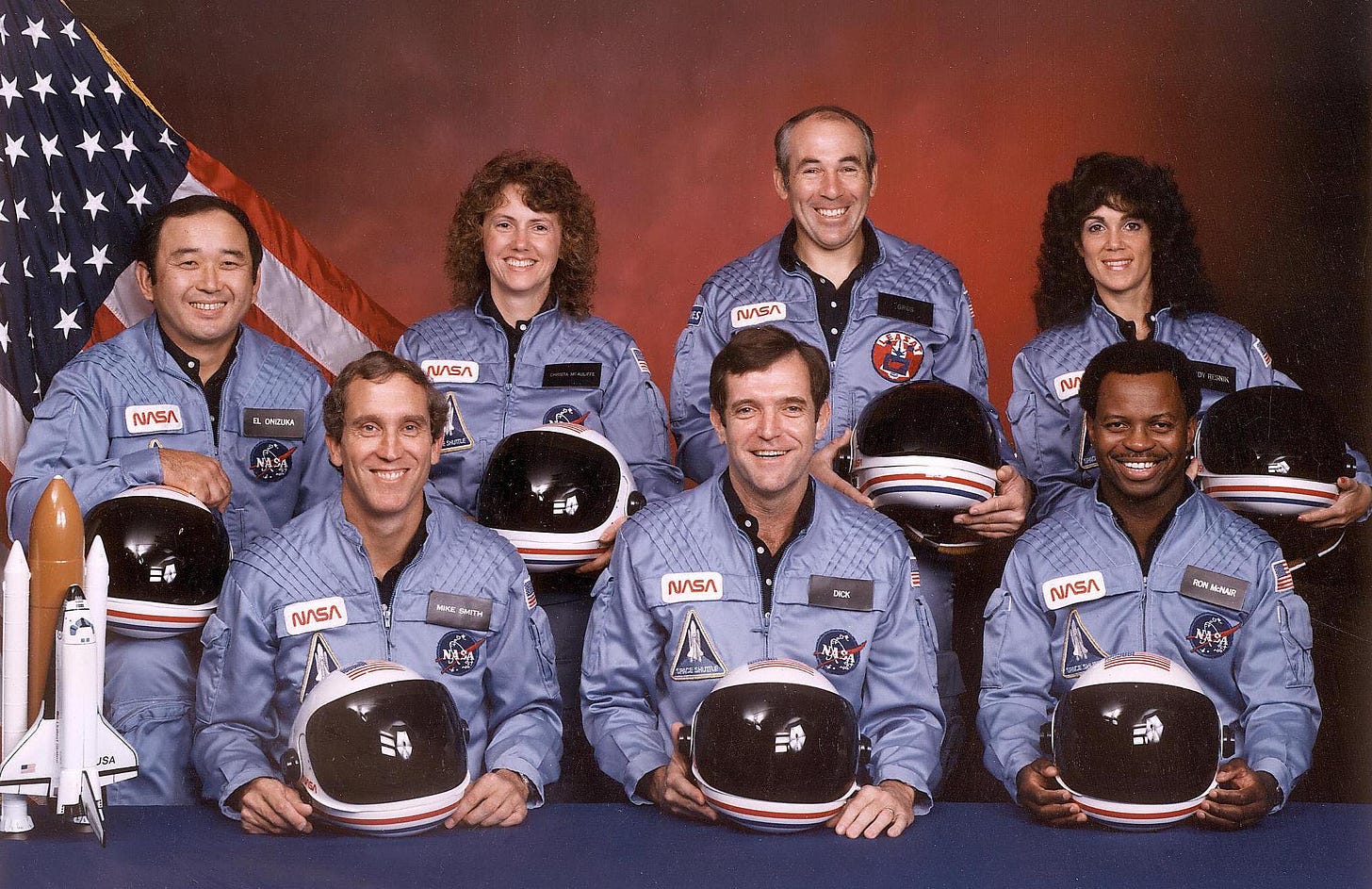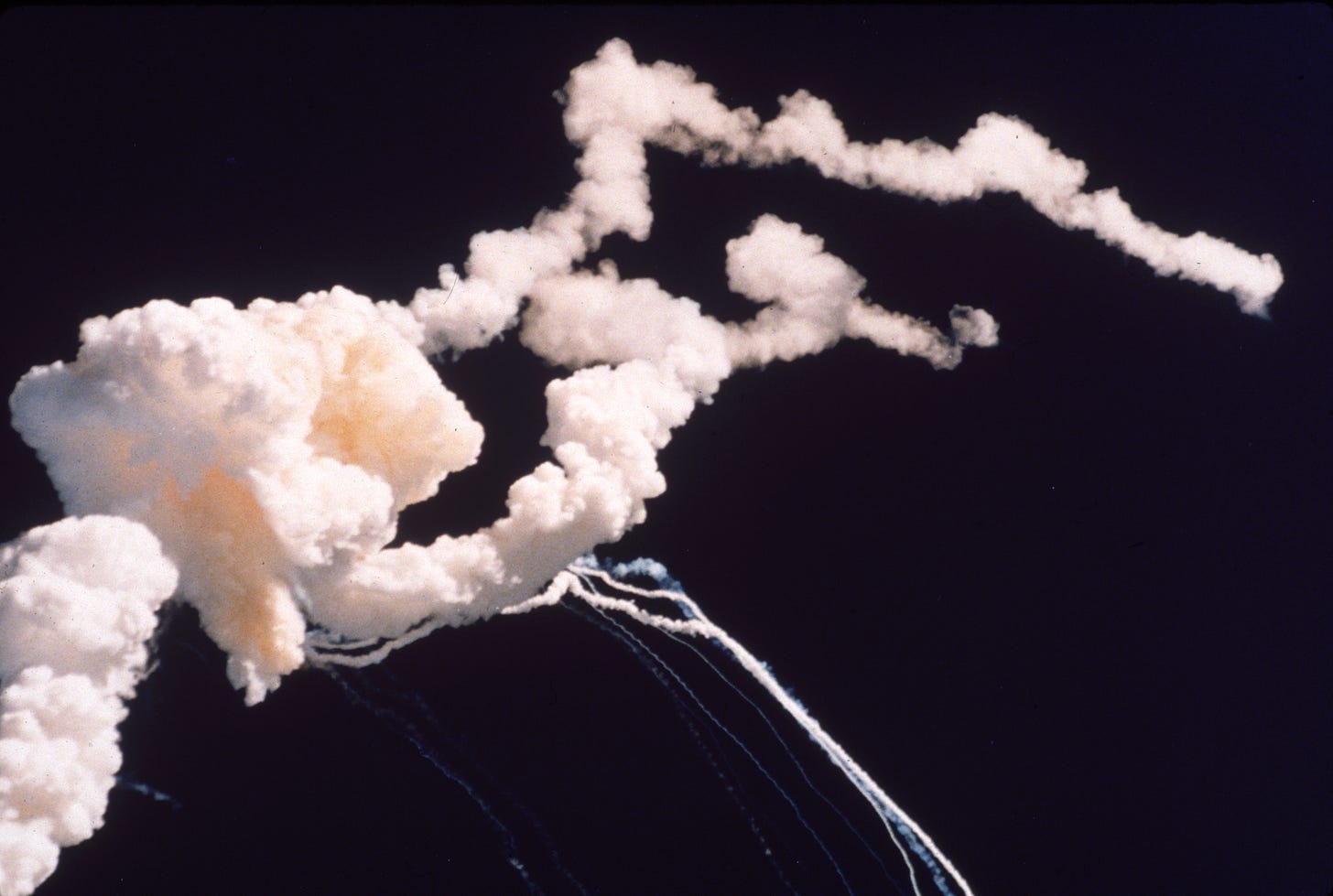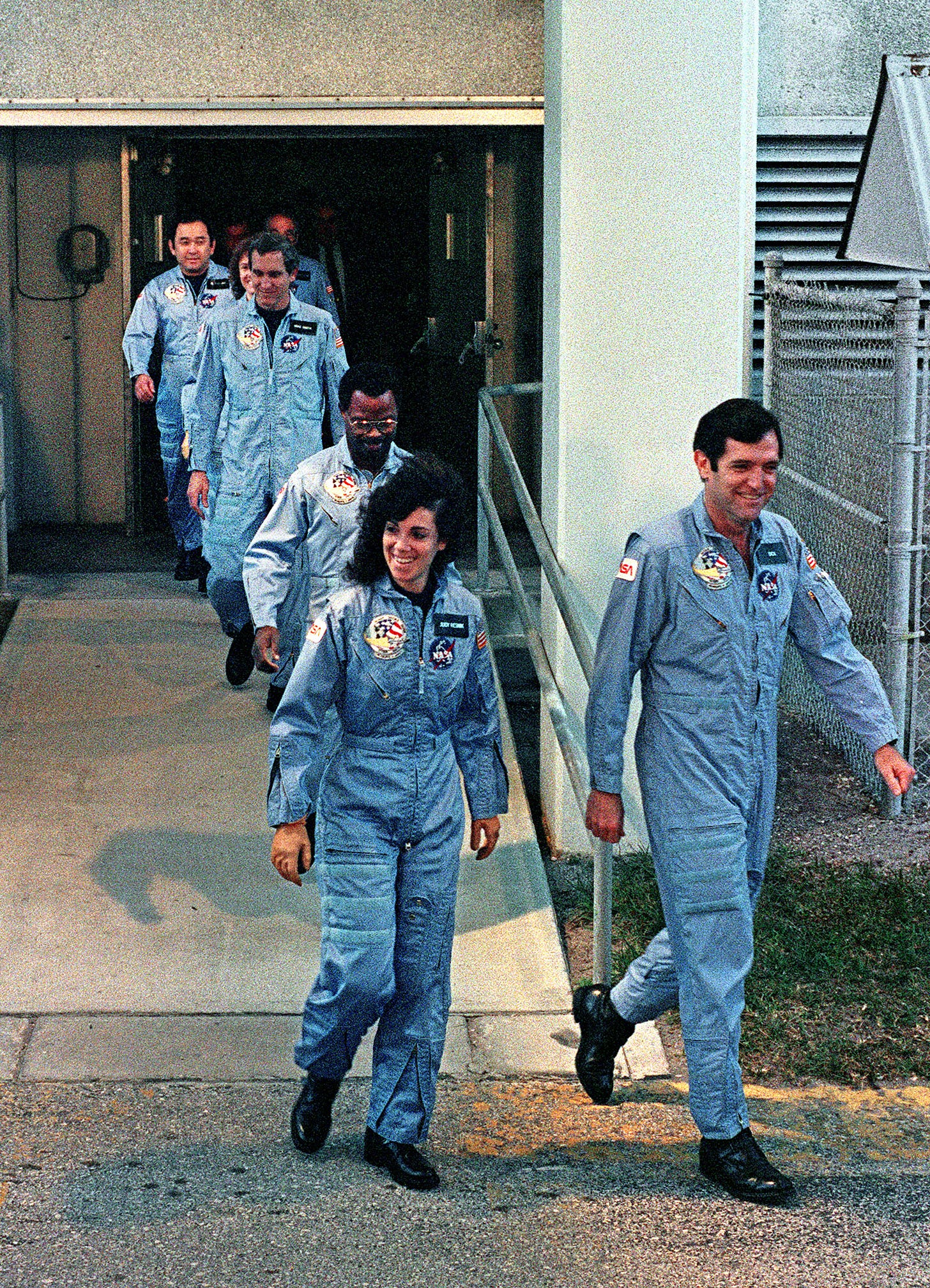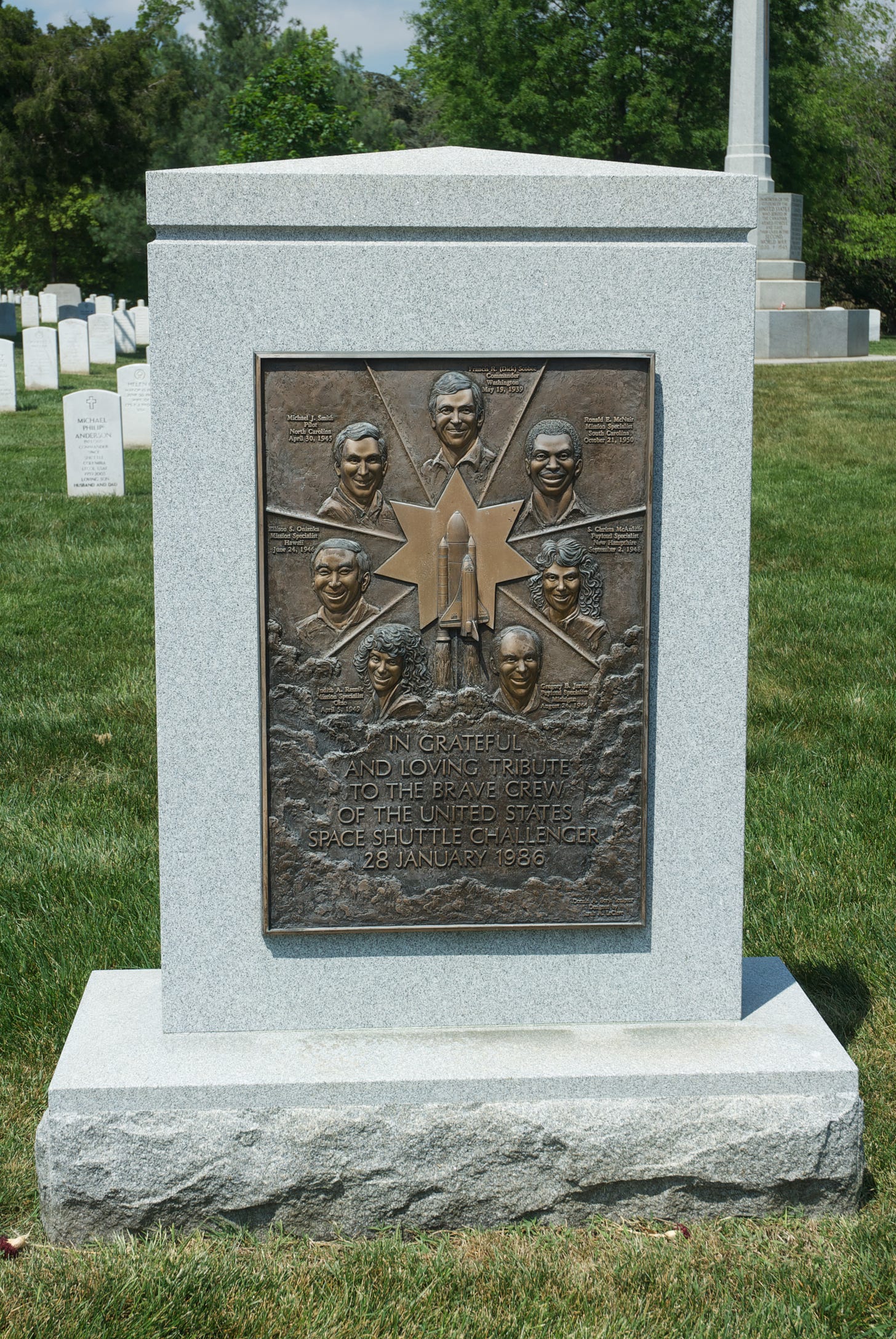Has it really been 35 years? I remember it as clearly as yesterday. A day of hope, of dreams, shattered into tragedy in front of the eyes of the world. Plumes of smoke and debris etched forever in my mind with their arches of death.
The Space Shuttle Challenger disaster was a shock to the nation and a particular blow to the field of space exploration. Once a popular concept, enjoying a height of national attention after President John F. Kennedy’s audacious call to go to the moon in 1962; interest in travel to the high frontier had waned in following years. In an effort to bolster public interest in space, NASA had included social studies teacher, Christa McAuliffe within its Challenger crew. The “Teacher in Space Program” brought the lofty vocation of astronauts into the reach of everyday citizens. It was not surprising that classrooms across the country tuned in to watch the launch live.
As a reporter, you learn early that breaking news can happen at any time, anywhere. But you can never truly prepare yourself for the instantaneous whiplash that occurs when history suddenly arrives. It was the morning of January 28, 1986 and Challenger (in its tenth mission) lifted off from Cape Canaveral, Florida at 11:38am EST. Its flight, a mere seventy three seconds before devastation. Although we knew it would be a day to be marked in future textbooks, it was difficult to make sense of the fact that the page would say tragedy instead of triumph. (NASA, after a period of investigation and redesign, would not return to flight for another two and a half years with the Space Shuttle Discovery on September 29, 1988.)

Named after the HMS Challenger, a British Navy corvette of the 1870s, the space shuttle had taken the Challenger name literally and defied social barriers as well as the bounds of Earth. Among its successful missions and milestones, Challenger launched Sally Ride as the first American woman (mission STS-7) and Guion Bluford, Jr. as the first African-American (mission STS-8) into space. On the day of its final flight, it had the most diverse group of astronauts NASA ever assembled on a single mission.
Beside our nation’s capital, at Arlington National Cemetery, the seven crew members of the Challenger lay among the rows of patriots.
Mission Commander: Lieutenant Colonel Francis R. “Dick” Scobee
Pilot: Captain Michael Smith
Mission specialists: Dr. Judith Resnik, Lieutenant Colonel Ellison Onizuka, and Dr. Ronald McNair
Payload specialists: Gregory Jarvis and “Teacher-in-Space,” Christa McAuliffe
Heroic men and women whose dedication to discovery furthered our quest of space exploration and advanced our knowledge; and whose sacrifice will not be forgotten. As we remember them today, take a moment to read John Gillespie Magee Jr.’s poem “High Flight” which graces their memorial marker:
Oh! I have slipped the surly bonds of earth
And danced the skies on laughter-silvered wings;
Sunward I've climbed, and joined the tumbling mirth
of sun split clouds, — and done a hundred things
You have not dreamed of – wheeled and soared and swung
High in the sunlit silence. Hov'ring there,
I've chased the shouting wind along, and flung
My eager craft through footless halls of air.
Up, up the long, delirious, burning blue
I've topped the windswept heights with easy grace
Where never lark nor even eagle flew —
And, while with silent lifting mind I've trod
The high untrespassed sanctity of space,
Put out my hand, and touched the face of God.
—Dan







I got teary-eyed reading the poem. God bless them and all of us.
It was several years before I could watch a liftoff. I can see them from my house. Long distance, but still very visible. Even now, I say a prayer until I see them safely separated.